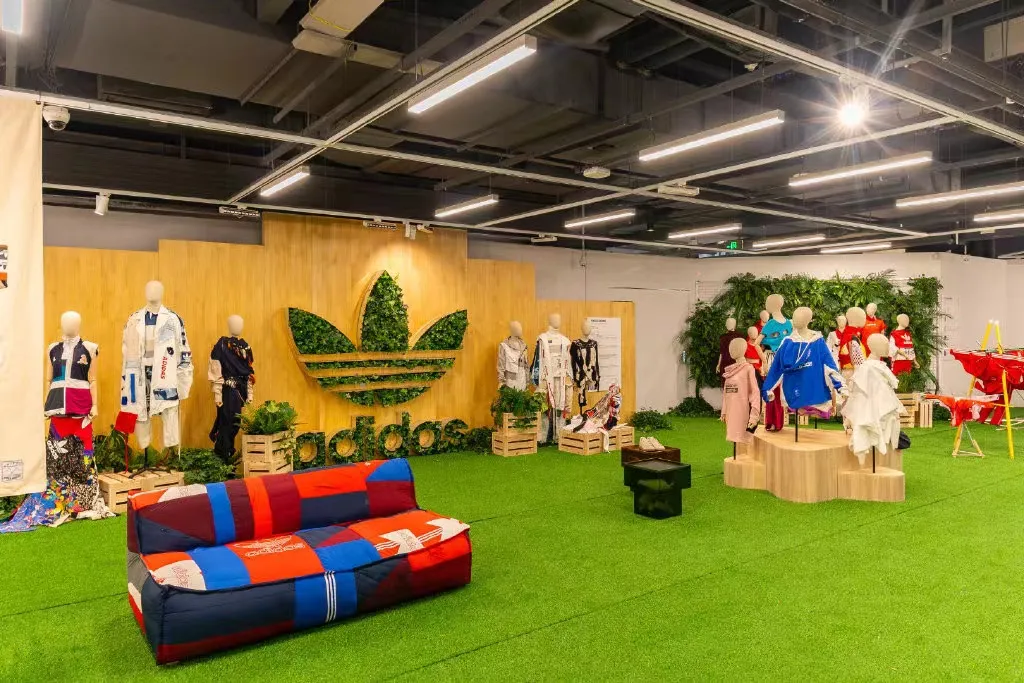Standing on the shoulders of giants allows us to see further.
/Carbon Insight/ is a series of columns launched by Carbonstop, focusing on "Decoding Best Practices in Carbon Management." We aim to help business leaders gain a comprehensive understanding of carbon management practices, philosophies, and methods used by leading companies both domestically and internationally by analyzing advanced carbon neutrality practices. This will help businesses avoid unnecessary detours on their path to carbon neutrality.
Sustainability has always been an integral part of Adidas's business model. Adidas has committed to reducing greenhouse gas emissions from each product by 15% by 2025 and achieving carbon neutrality in its own operations by 2025. By 2030, it aims to reduce greenhouse gas emissions across its entire value chain by 30% compared to 2017 levels. By 2050, Adidas plans to achieve carbon neutrality across its entire value chain.
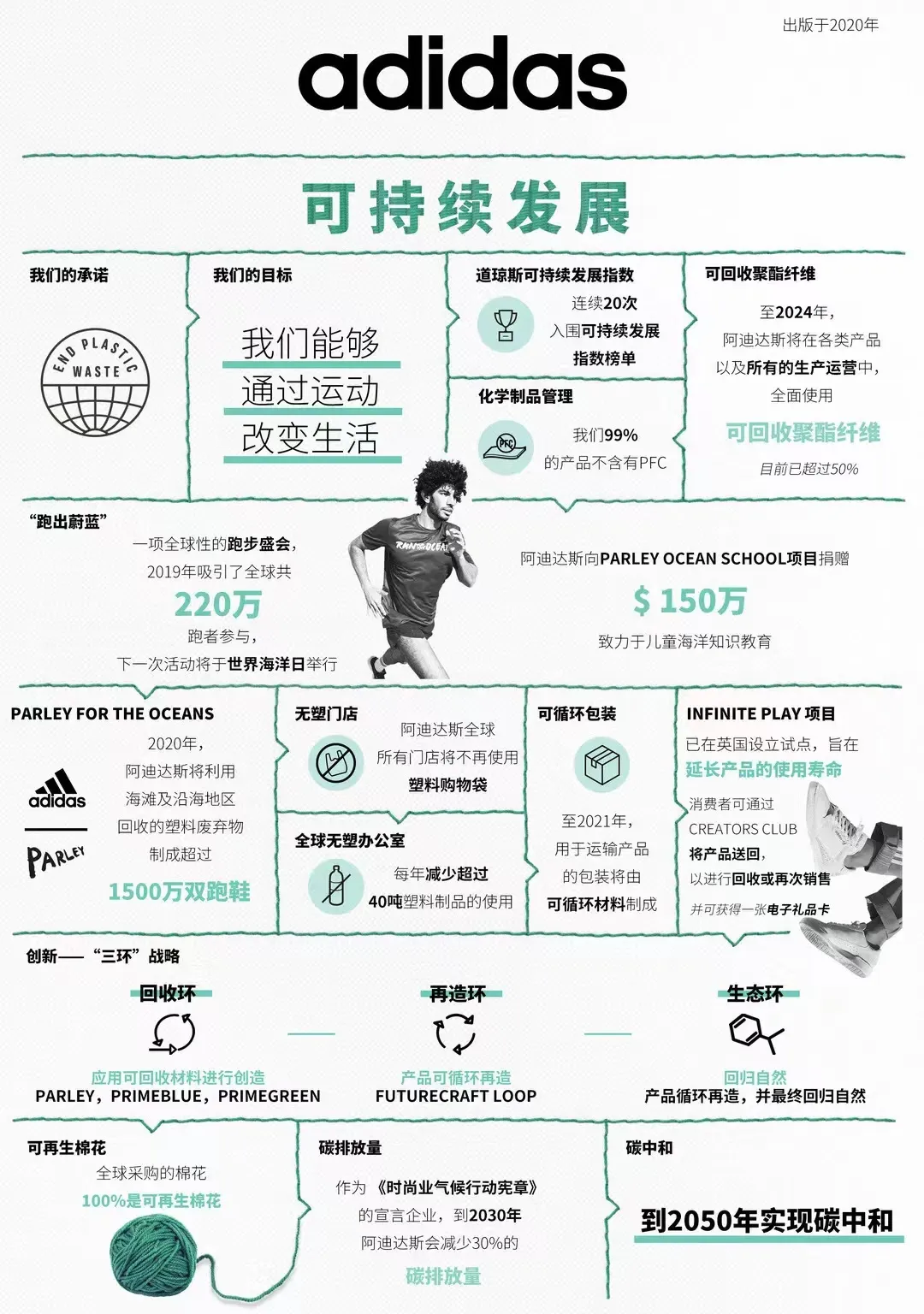
Source: Official Adidas WeChat Account
After extensive research into companies that have proposed carbon neutrality strategies, Carbonstop has distilled the CREOS pathway for achieving carbon neutrality. This article analyzes and explores Adidas's carbon neutrality implementation path based on the corporate carbon neutrality methodology—CREOS.
01 Calculating (Calculation)
"Quantifying carbon emissions is always the top priority in carbon emission management."
Achieving ambitious goals requires reliable data. Therefore, Adidas has developed an environmental footprint tool that enables it to quantify and monitor environmental impacts across its entire value chain, from material acquisition, production processing, product assembly, operations, logistics to the end of the product lifecycle.
This tool helps Adidas track and measure carbon emissions during the carbon neutrality process and make fact-based decisions through scenario analysis. The results show that most of Adidas's carbon emissions come from the supply chain, accounting for over 90% of the entire value chain, with the majority coming from raw material production and processing.
02 Reducing (Reduction)
"After setting carbon neutrality targets and calculating carbon emissions, the first step for companies should be to identify 'hotspots' of carbon emissions and reduce them as much as possible."
In the reduction phase, Adidas focuses on multiple fronts, including product materials, packaging and transportation, and green buildings, aiming to achieve significant carbon reductions across the entire value chain.
1. "Three-Loop System" for Low-Carbon Fashion Products
Adidas has set a long-term goal to "end plastic waste" and creatively introduced a sustainable "three-loop" system, which includes the recycling loop, the remake loop, and the eco-loop.
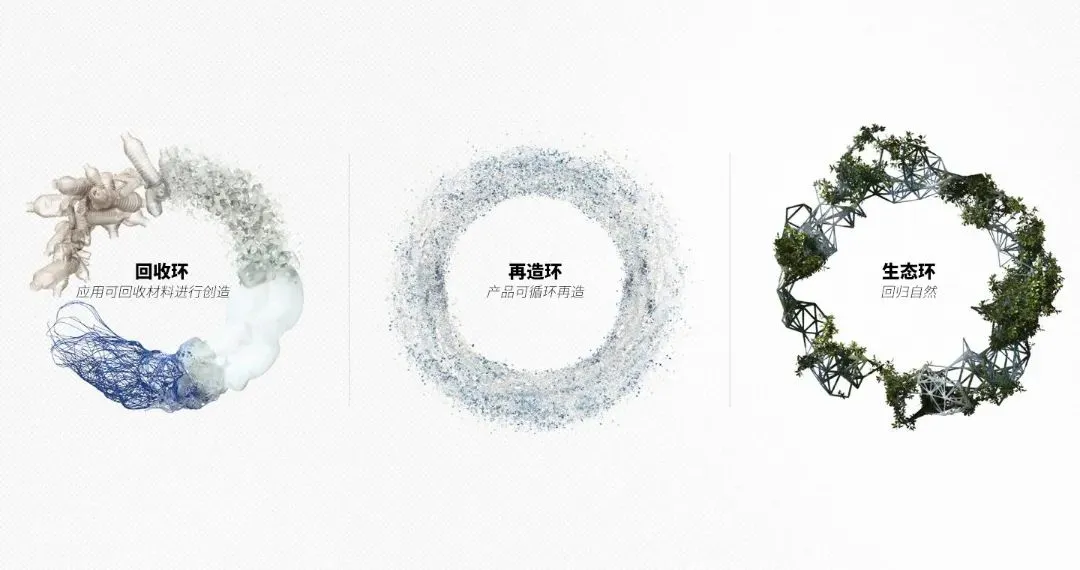
Source: Official Adidas WeChat Account
The recycling loop involves using recycled plastic waste and other materials to manufacture high-performance products. The remake loop refers to the recyclability of products, such as the ULTRABOOST MADE TO BE REMADE running shoes, which are made from a single recyclable material. At the end of their lifecycle, these shoes are collected, disassembled, and remade into new products. The eco-loop involves using biodegradable natural materials to manufacture products. Currently, Adidas has partnered with collaborators to develop Mylo, a pure bio-material made from mycelium, which serves as a leather alternative and has been used in the iconic Stan Smith shoe models.
Adidas continues to research fully recyclable or biodegradable materials, aiming to use only recycled polyester in all products starting from 2024. Additionally, the company will intensify its promotion of sustainable materials and launch large-scale product recycling programs. Adidas has committed to reducing the average carbon footprint of each product by 15% by 2025.
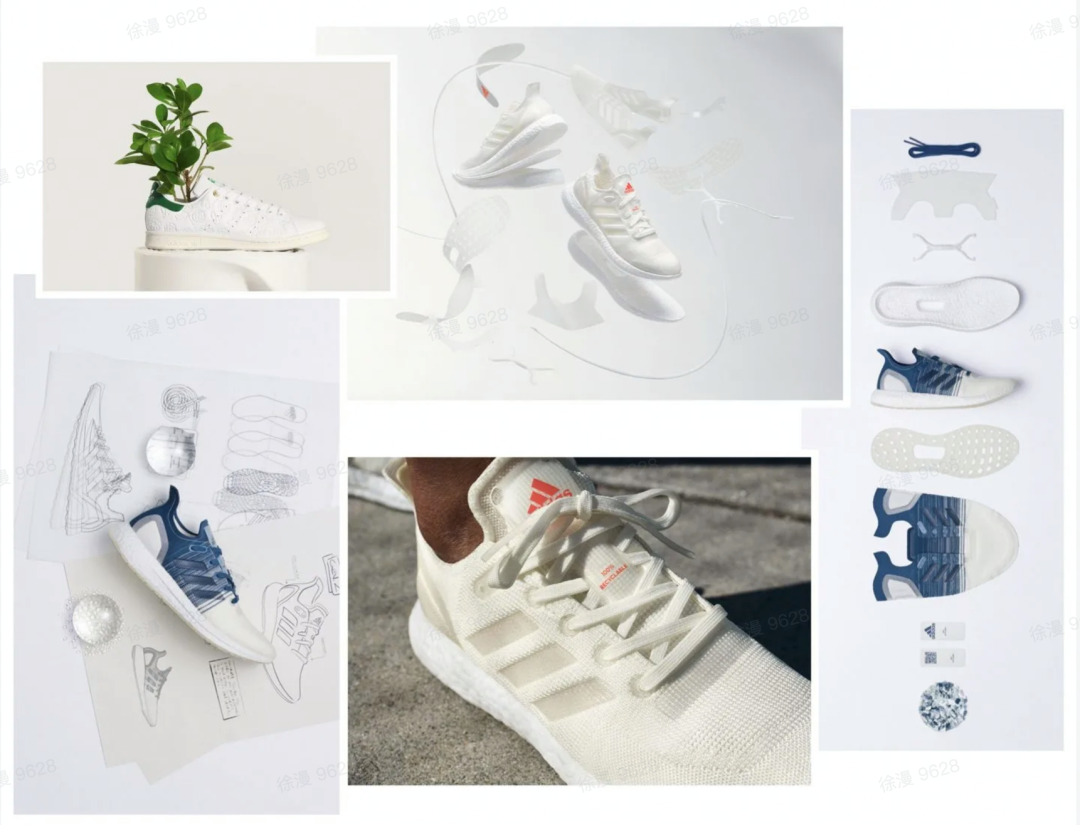
Source: Adidas Official Website
2. Designing Sustainable Packaging
In terms of packaging, Adidas strives to follow sustainable design principles: avoid or minimize packaging where possible, use recycled or recyclable materials, design packaging with single materials whenever feasible, design for easy disassembly, label packaging components for recycling, and avoid materials containing restricted substances.
In areas where plastic cannot be avoided, such as transport packaging, Adidas is working with the global innovation platform "FashionforGood" to explore the development of recycling infrastructure and innovative recycling processes for plastic bags, testing the technical feasibility of plastic bag recycling. By the end of 2021, Adidas had successfully replaced almost all plastic bags used in transportation with 100% recycled low-density polyethylene (LDPE).
3. Adopting Low-Carbon Transportation Methods
Adidas regularly tracks the environmental impact of cargo transportation. To reduce emissions, Adidas collaborates with carriers that use ISO14001 Environmental Management Systems (EMS), and primarily transports goods by sea. Although air freight increased in 2021 due to supply chain challenges brought about by the COVID-19 pandemic, the majority of Adidas's transportation still relies on sea freight. In 2021, 97% of footwear, 93% of apparel, and 72% of accessories and equipment were transported by sea.
4. Building "Green Buildings"
To fully commit to emission reduction, Adidas has intensified its efforts in green building, constructing retail stores and company facilities that meet the standards of the Global FM, LEED Gold certification for green building assessment systems, and BREEAM certification. For example, at Adidas's headquarters in Germany, the company uses an innovative rainwater cooling system to collect and recycle rainwater from nearby lakes, thereby reducing energy costs and CO2 emissions.
03 Engaging (Engagement)
"For most companies, beyond reducing their own emissions, engaging internal members and ecosystem partners to reduce emissions together is where the real value lies."
Adidas has initiated various programs to help suppliers expand the use of renewable energy and improve energy efficiency; it also engages consumers and employees to become the main characters in the sustainability story.
1. Engaging Upstream Suppliers to Achieve Low-Carbon Production
First, increasing the use of renewable energy: Adidas encourages suppliers to install rooftop solar panels and successfully increased the capacity of installed rooftop solar panels to 93 MWp in 2021. Adidas plans to continue driving and incorporating more secondary suppliers to use renewable energy in 2022.
Second, phasing out coal-fired boilers: Adidas has committed to not installing any new coal-fired boilers from 2022 and to phasing out all existing coal-fired equipment at its Tier 1 and Tier 2 suppliers by 2025. Additionally, Adidas provides strategic guidance and technical support to suppliers for the phased elimination of coal-fired equipment.
Third, continuing to improve energy efficiency: In 2021, Adidas transitioned to a "supplier self-governance model," where suppliers independently optimize their energy efficiency while Adidas monitors and tracks progress.
Fourth, developing industry-wide training in Asia: Adidas, in collaboration with GIZ, developed an online climate action training program, encouraging all suppliers to participate in UNFCCC climate action training. This initiative provides suppliers with the expertise needed to effectively mitigate climate change and achieve climate neutrality (GHG).
2. Encouraging Consumers to "Run for a Low-Carbon Future"
Since 2015, Adidas has been organizing the "Run for the Oceans" campaign. In 2021, the event attracted over 2.69 million runners from more than 200 cities across the country, accumulating over 16 million kilometers of running distance and collecting more than 10,000 kilograms of plastic waste. These plastic bottles will be transformed into granules, yarns, and fabrics through 12 professional processes, eventually being reborn as new products.
Adidas also distributed 5,000 "Gifts from the Ocean," made from recycled ocean plastic, to consumers as a token of gratitude for their contribution to environmental protection. With the professional technical support of Carbonstop, Adidas calculated the emission reductions generated from this recycling process, resulting in a total reduction of 2.9 tons of CO₂.
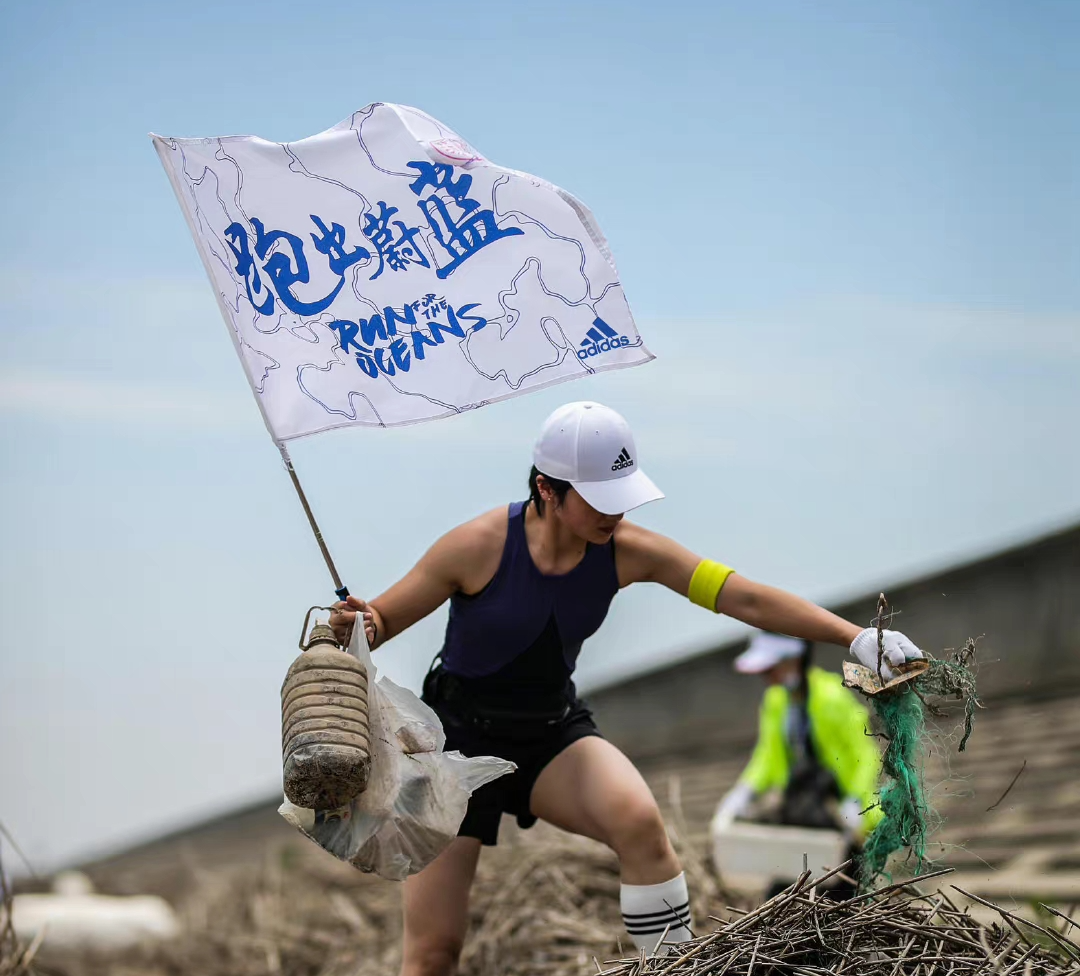
Source: Internet
3. Old Clothing Recycling Program
Every year, Adidas collaborates with professional non-profit organizations to sort, clean, and disinfect all received old clothing. Depending on the condition of the clothes, they decide on their next use. By October 16, 2021, Adidas had collected a total of 836 pieces of old clothing through its recycling program, estimated to reduce carbon emissions by 2.09 tons. Reusable clothing was donated to underdeveloped regions such as Yunnan, Qinghai, and Tibet through non-profit organizations to support local residents' daily needs.
4. Green Fund to Encourage Low-Carbon Living Among Employees
The Green Fund, launched in 2012 as a green special budget, is the source of funding for all regional carbon reduction projects at Adidas. It offers car subsidy bonuses to encourage employees to use low-carbon vehicles and public transportation. Additionally, all plastic bottles have been eliminated from Adidas's cafeterias and coffee shops, replaced with reusable cups.
04 Offsetting(Offsetting)
"Inevitable carbon emissions can be offset by planting trees or purchasing carbon credits, achieving zero emissions."
Adidas has set a clear roadmap to achieve its emission reduction targets, focusing on reducing absolute energy consumption and greenhouse gas emissions, improving energy efficiency, procuring renewable energy, and purchasing Energy Attribute Certificates (EAC) to decarbonize operations.
In addition, Adidas successfully issued its first sustainability bond in 2020, with the proceeds used to establish Adidas's Sustainability Bond Framework.
05 Spreading(Spreading)
"After setting carbon neutrality goals and pathways, companies should communicate these early to have a greater impact on the industry."
Adidas engages in various brand activities that combine environmental themes with art, avant-garde, and fashion, attracting more young people to pay attention to environmental concepts.
1. Partnering with Tmall for Immediate Green Action
Adidas partnered with Tmall to host the "Immediate Green Action" environmental-themed Super Brand Day, featuring diverse formats such as music performances and talk shows to convey green beliefs and environmental commitments. Senior executives from both Adidas and Tmall discussed sustainable development concepts, with brand ambassadors and the avant-garde band mandarin joining offline to support the event. This collaboration highlighted Adidas's eco-friendly products and the commitment to "Immediate Green Action" for Earth. Prior to the event, Adidas's official social media accounts on Weibo, WeChat, Tmall, and Xiaohongshu turned green to build anticipation for the "Immediate Green Action" Super Brand Day.
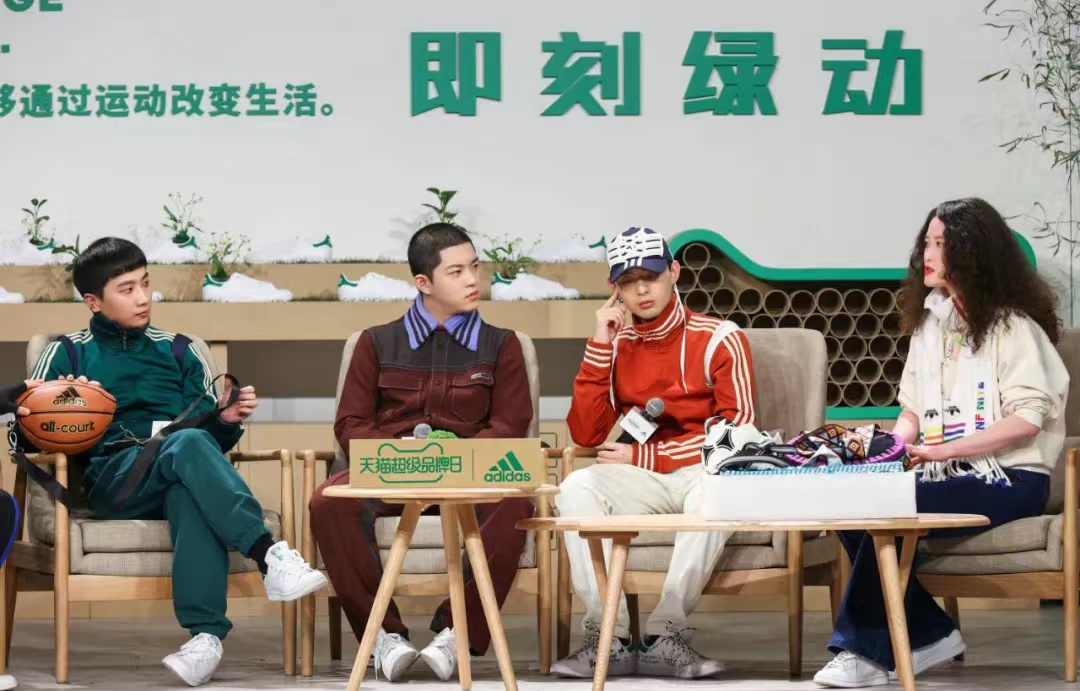
Source: Internet
2. Leveraging Social Media Influencers to Co-create TVCs
adidas by Stella McCartney collaborated with fashion blogger Dipsy Di Xi, inviting fashion critic Tang Shuang TS, lifestyle blogger Hi-Yoga, and health and fitness blogger Yao Yikou Gummy to discuss the topic "Is Sustainable Fashion a Myth?" and create a TVC for dissemination. Each influencer shared their own "Sustainable Actions," such as choosing sustainable products, minimizing wardrobes, wearing items multiple ways, and opting for active transport and low-carbon travel. Through this, aSMC expressed the view that "fashion and sustainability are not mutually exclusive" and conveyed its commitment to sustainable fashion.
3. Offline Pop-up Markets, Embodying Green Practices
In June 2021, adidas Originals launched a limited-time "Waste-to-Wonder Workshop," inviting pet home designer Yang Zhiyuan from Old Number Studio to share how to upcycle old clothes into stylish cat beds. Additionally, visitors could enjoy an exhibition of upcycled clothing art created by hundreds of designers and art students at the SUSTAN Market, exploring the possibilities of harmonious coexistence between humans and nature in everyday life.
